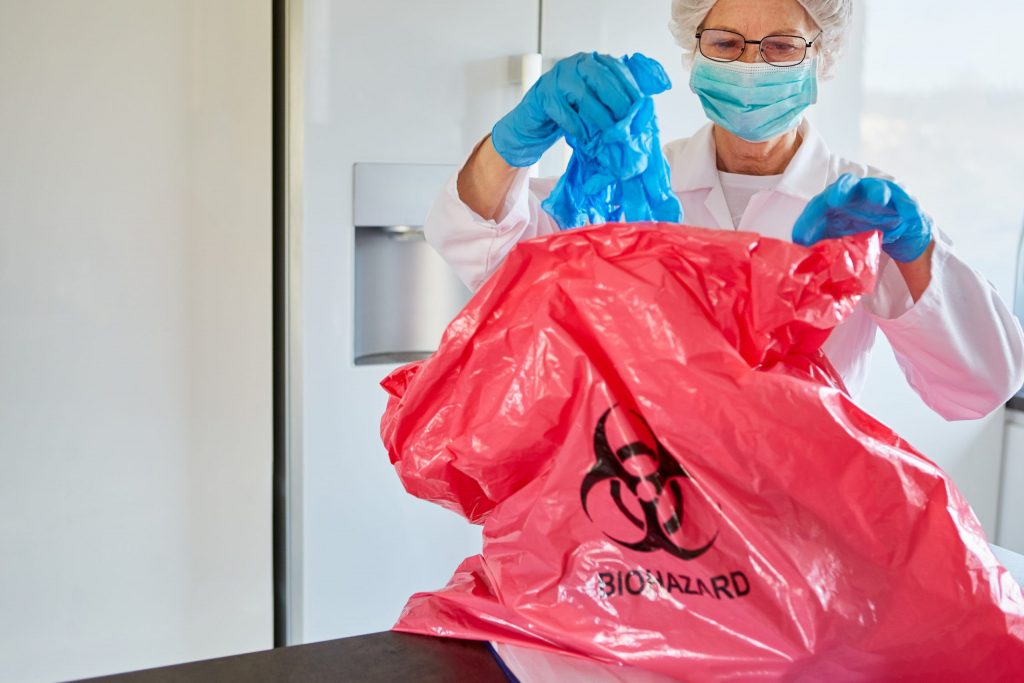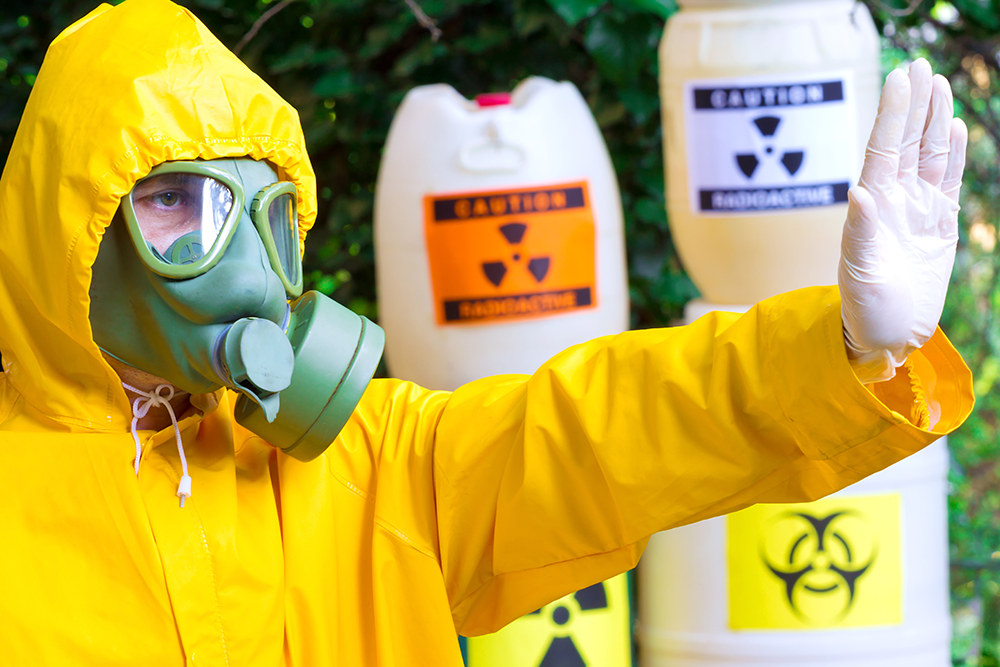Biohazard Removal: Safe Handling and Disposal of Hazardous Products
Biohazard Removal: Safe Handling and Disposal of Hazardous Products
Blog Article
Professional Biohazard Cleanup for Criminal Offense Scenes, Trauma Incidents, and Contaminated Rooms
In the realm of specialist biohazard clean-up, meticulous attention to information and adherence to safety and security protocols are critical. As we delve right into the complexities of biohazard cleaning for these sensitive settings, a much deeper understanding of the challenges and essential treatments involved will arise, dropping light on the essential role of expert cleanup services in recovering security and tranquility of mind.

Relevance of Biohazard Cleanup
Biohazard cleanup complying with criminal offense scenes and trauma events is important for making sure the safety and security of people and the atmosphere. When these occurrences happen, they typically leave behind a variety of biohazards such as blood, bodily fluids, and other possibly transmittable products. These materials can nurture hazardous microorganisms like viruses and germs, positioning serious wellness dangers otherwise properly cleaned up and disinfected.
Expert biohazard cleaning solutions are trained to manage these dangerous products safely and effectively. They have the needed devices, such as individual safety equipment and specialized cleansing agents, to completely sanitize the influenced locations. By entrusting the cleanup to experienced professionals, people can avoid direct exposure to dangerous microorganisms and protect against the spread of infectious illness.
Moreover, proper biohazard cleaning is vital for safeguarding the setting. Improper disposal of biohazardous products can contaminate dirt, water sources, and air, posturing a danger to wildlife and the environment. By following strict clean-up procedures, specialists can ensure that biohazards are securely gotten rid of and taken care of according to laws, minimizing the threat of environmental contamination.
Types of Biohazards Encountered
Numerous hazardous products generally encountered in criminal offense scenes and trauma incidents existing considerable health risks otherwise handled appropriately. Blood and bodily fluids are amongst the most common biohazards found in these scenarios. These fluids can carry virus such as HIV, liver disease B and C, and other harmful microbes. Furthermore, tissues, organs, and body parts can likewise posture significant wellness dangers because of potential contamination.
Another kind of biohazard typically encountered is sharp objects like needles, damaged glass, and other products that can cause injuries and transfer infections. Chemical hazards are likewise an issue, as criminal offense scenes might include materials like tear gas, pepper spray, or drug production materials that require specific handling and disposal procedures to avoid further damage.
Furthermore, mold and germs development can take place precede where decomposition or extended direct exposure to moisture has actually taken place. These microorganisms can launch toxins and irritants right into the air, presenting respiratory system threats to those subjected. Generally, biohazard cleanup professionals should be experienced and well-equipped to successfully manage these numerous types of dangerous products to ensure the security of themselves and others.
Tools and Protective Gear
When dealing with the crucial task of managing biohazards encountered in crime scenes and injury cases, the use of proper equipment and protective gear is critical to making sure the security of individuals entailed in the cleaning procedure. Individual safety devices (PPE) such as gloves, goggles, coveralls, and masks are necessary to stop direct contact with potentially unsafe compounds. Respirators are essential when dealing with biohazards that might become air-borne, safeguarding employees from inhaling unsafe bits. Specialized cleansing devices like biohazard anti-bacterials, bags, and sharps containers are necessary for the secure collection and disposal of infected products. In addition, heavy-duty devices such as industrial-grade cleansing agents, foggers, and ozone generators may be required to extensively sterilize the affected area. Ensuring that all tools is effectively maintained, frequently checked, and utilized according to safety guidelines is important in reducing the danger of exposure to biohazards throughout clean-up operations.
Clean-up Refine and Techniques
Effective and detailed cleaning of biohazardous products from criminal activity scenes and injury events requires thorough focus to detail and adherence to stringent security protocols. The cleaning my explanation procedure normally includes several essential steps. Originally, the area should be evaluated to establish the extent of contamination and the proper cleansing methods required. Next, all biohazardous products, including blood, physical liquids, and cells deposits, have to be thoroughly eliminated and disposed of based on regional laws.
Complying with the removal of biohazardous products, the affected area undergoes a complete cleaning and disinfection process. This step entails using specialized cleaning up agents and equipment to guarantee that all traces of contamination are eradicated. After cleaning, the area undergoes extensive testing to verify that it is risk-free and free of any type of remaining biohazards.

Decontamination and Disposal Procedures
To make sure comprehensive purification and correct disposal of biohazardous materials, adhering to the careful cleanup procedure, particular procedures should be carefully followed with stringent adherence to safety and security procedures. Decontamination involves the elimination or neutralization of pollutants to what do you use to clean up throw up minimize the threat of exposure and spread of hazardous substances. This process generally consists of cleansing, sanitizing, and sanitizing the affected location using specialized tools and EPA-approved chemicals.
Once decontamination is completed, proper disposal of biohazardous materials is essential to avoid additional contamination or damage. Biohazardous waste, such as blood-soaked products or bodily liquids, have to be meticulously gathered, packaged, and identified according to governing guidelines. ATP testing. These products are after that transported to accredited centers for disposal via appropriate networks, guaranteeing compliance with neighborhood, state, and federal laws

Conclusion
Finally, expert biohazard cleanup is important for ensuring the safe and efficient elimination of hazardous materials from criminal offense scenes, injury occurrences, and infected rooms. By utilizing specialized devices, safety equipment, and following correct clean-up processes and techniques, biohazard cleaning groups can effectively dispose and decontaminate of biohazards, lessening the danger of direct exposure and injury to people and the atmosphere.
As we delve into the details of biohazard cleanup for these delicate settings, a deeper understanding of the difficulties and vital procedures involved will emerge, shedding light on the vital duty of specialist cleanup services his comment is here in restoring safety and security and tranquility of mind.
Professional biohazard clean-up solutions are trained to manage these dangerous materials safely and successfully. By adhering to rigorous cleanup protocols, professionals can guarantee that biohazards are safely eliminated and disposed of in conformity with laws, reducing the danger of environmental contamination.
In general, biohazard clean-up specialists should be qualified and well-appointed to efficiently deal with these various types of dangerous materials to make certain the safety and security of themselves and others.
When addressing the crucial job of dealing with biohazards come across in crime scenes and trauma occurrences, the utilization of proper devices and protective equipment is extremely important to ensuring the security of individuals entailed in the cleanup procedure.
Report this page